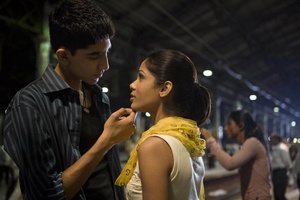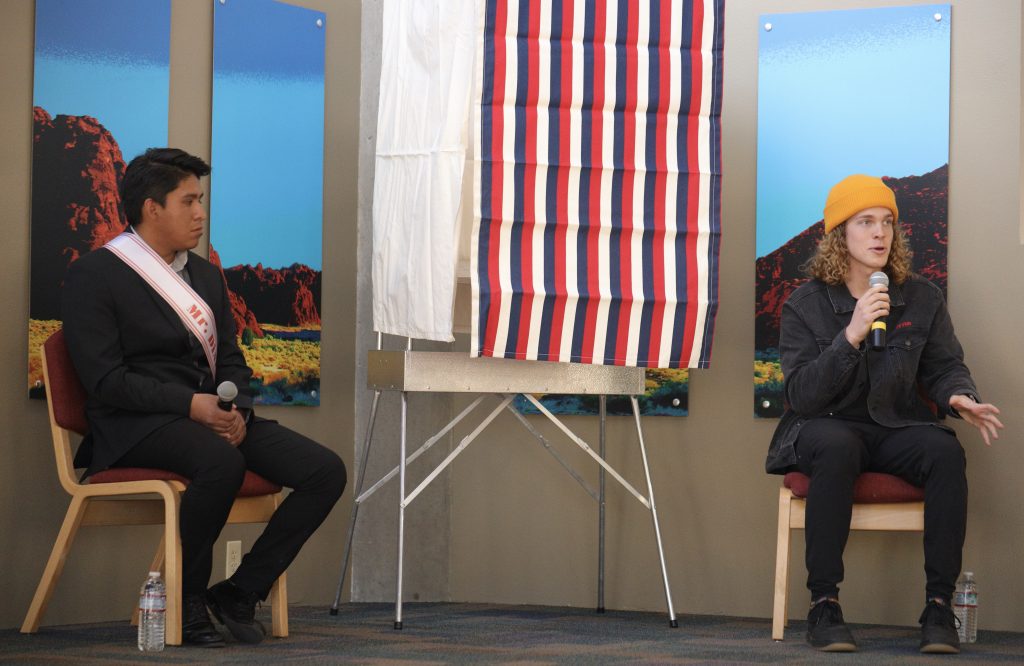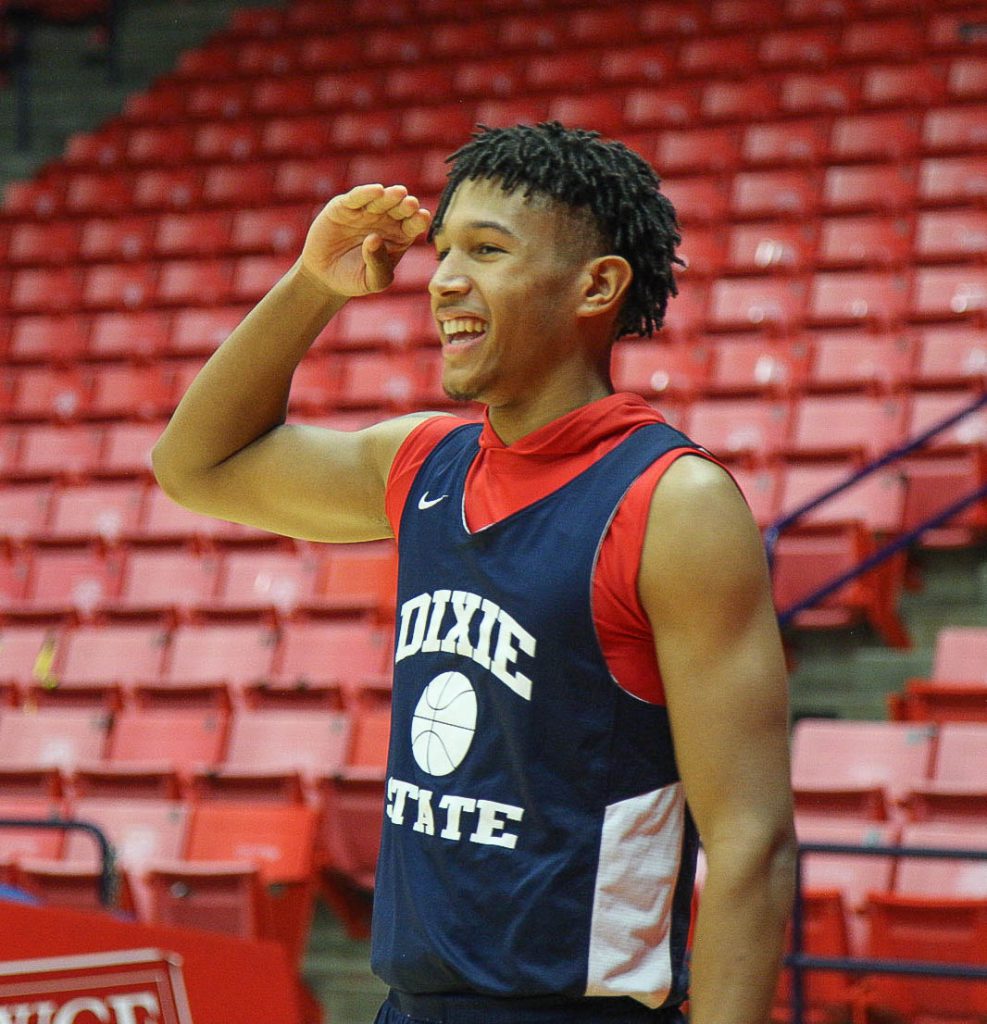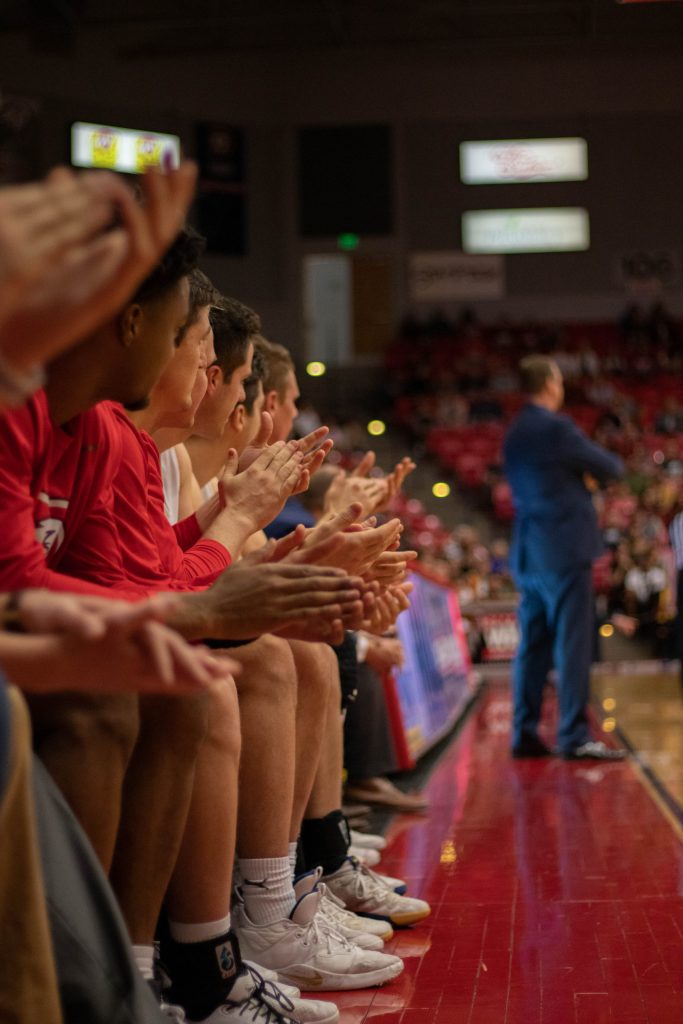Dixie State University has a growing athletics program. This lead is stating the obvious and is too general.
However, some students question DSU’s athletic spending. <you don’t have anything to back this up, so you can’t say this. The letter is one student, so you can’t say “students.” Notably for DSU is the upcoming remodel of Legend Solar Stadium, which is already earmarked to cost millions of dollars, <use specific amount as well as the yearly expenses of running the various athletic programs.
Jason Boothe, executive director of athletics, said the remodel of the stadium will be done in several phases.
“Construction will begin with phase one – replacing the track and field – in early February,” Boothe said. “Phase one has a $2 million budget. Phase two, east side seating and support building underneath it, <you use dashes above but commas here. It’s not consistent will begin in the summer [or] fall time frame. The budget for this phase has not been determined yet as it has not been designed yet.” <this quote is all just factual stuff that would be better in an indirect quote agreed
But this is just one project DSU is working on, specifically made possible through donations. Is it entirely covered by donations? The many athletic programs’ yearly costs are a separate matter.
Josh O’Baggy, a St. George resident, said the better teams do, the more funding they should receive.
“My reason for this thought process is because it encourages athletes to work harder to earn their equipment,” O’Baggy said. “Plus, it’s a big enticement for the athletes performing to build their bond with their teammates and encouragement for passing their classes and working hard to reach their full potential both physically and educationally.” <if you really think you need this source, move him down to the bottom. His insights are not too important, especially because he’s just a random resident What is his relevance to the story? Is he a sports guru or super fan?
According to Equity in Athletics Data Analysis, a government website where DSU submits data on its athletics program, laid out large numbers for the DSU athletics’ costs. <this sentence doesn’t make sense. “According to… laid out large numbers…” Doesn’t work. Just bring the next paragraph up.
DSU spent $5,742,797 overall in the 2014-2015 scholastic year Is that the most recent data? What about last year? on its athletics programs. <according to what? EADA right? However, it also generated $5,839,537 from its sports, coming ahead of its costs by $96,740. This seems to be what the story is supposed to be about–where that $96,000 goes. But you don’t say.
The money is generated in a variety of ways, Boothe said.
“We get a lot of support from the university, mainly through scholarship support for the student-athletes and the salaries and benefits for the staff and coaches as well as student fees,” Boothe said. “The other revenue that we generate to help sustain ourselves comes from corporate sponsorships, ticket sales, camps, venue rentals, booster club, and other donations and fundraising activities.” So that $5 million includes salaries and scholarships from the school? That needs to be broken down. They for sure have the details.
Still no mention of the specifics of student fees. Here is the last time we reporte on how much student fees are going toward athletics: http://www.dixiesunnews.com/news/articles/2016/02/04/student-fees-fund-athletics-dsusa-events-building-/
$80 from every student is a lot. Why do they need that much money if they are generating almost an extra $100,000 each year? These are the kind of questions that are important in articles about budgets, numbers, etc.
The student fee number is no more relevant than any other source if the story is about where revenue goes.
The athletics programs, however, do not make much money, Boothe said. Compared to what?
“Some years we will make money, although very little,” said Boothe said. “When that happens, we reinvest those funds back into the programs. We’re not talking about a lot of money when or if that happens.” This is all very general. I’d like to see numbers. What’s a little or a lot? Take that $96,000. How does it compare to years past? What do they hope to make? I’m certain that profit is budgeted for something.
However, Boothe said the most important part DSU athletics play is its roles in enrollment, advertising, public relations, community service ambassadors and more. This doesn’t seem relevant to the numbers. It sounds like he’s trying to defend the program, but that’s unnecessary.
Natasha Corral, a junior accounting major from Odessa, Texas, said she felt there was a high value to colleges’ athletics programs even without the programs making any money. She was used last semester, so I’m not thrilled to see her again. Plus she seems like a random student source.
“I believe that sports invite unity and team spirit for the school,” Corral said. “We don’t always agree on politics, educational requirements, professors, et cetera. Sports offer an outlet to one simple thing we can all agree on: winning.”
You need some kind of transition into this idea, which I’m guessing is why you started the sentence with but. But it doesn’t contrast with what the source said, so I’d write a complete sentence transition. But, not all DSU teams are given the same amount of money. According to EADA, the average salary for a head coach over a DSU men’s team is $38,579, while a head coach over a women’s team is $27,748. <this is interesting. This could be higher up in your article
“That average might be a little misleading, but it’s due to several factors,” Boothe said. “One, we have 13 head coaches for our 15 teams. Of those 13, only 6 AP are full-time: football, basketball and baseball for men, and volleyball, soccer and basketball for women. Two, we have our men’s and women’s cross country and women’s track coach who does all three of those sports.” This quote doesn’t explain the discrepancy to me.
Boothe said DSU considers the disparity in pay an issue and a top priority to resolve by getting more of the head coaches to full-time status. <this could even be part of your lead So as more teams are added to DSU’s athletics program, equalizing the head coaches is one of the important athletic issues to keep an eye on, Boothe said. I think this idea could be a whole different story.
This is a lot better than version 1. A lot of these edits are ones I made on your first draft though.
This story has a lot of different angles–breadth but no depth. That’s why you had to write a general lead. I looked back at the assignment sheet, and this story was supposed to strictly be about where sports revenue goes (unless the angle has changed). So far you have one paragraph about $96,000. The question is where that money goes. The stadium paragraphs don’t seem relevant to this story (though they could be used for something else). Has all the money for the remodel been gathered? I love the salary angle, but that could be its own story with a lot more research. As a public institution DSU cannot hide its budgets if they are requested. This seems like the story where we need to request the data, analyze it, ask questions of relevant sources, then figure out what, if any, the story really is. The hard thing about budgets is they don’t speak for themselves. It’s hard work. The great thing is they often produce a lot of story ideas. My recommendation is to start over on this one and really develop the issues you raise in separate stories.






